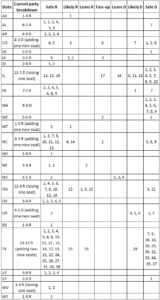At The Nation, Contributing Editor Doug Henwood and Lauren Melodia, deputy director of macroeconomic analysis at the Roosevelt Institute, discuss two separate approaches in “What Should the Democrats Do About Rising Inflation? Doug Henwood argues that without raising taxes, many leftist policies will come with risks, while Lauren Melodia writes that the GOP is exaggerating inflation concerns.”
In his contribution, “Raise Taxes, Later,” Henwood writes,
The Democrats’ reaction to this price scare has often been evasive, dismissing it as not real or as unimportant or “transitory.” That’s wrong on both facts and politics. It is real, it’s important for as long as it lasts, and only a soothsayer knows if it’s transient. More recently, they’ve blamed corporate greed, which has been with us forever, and high profits, which have been with us for decades. Many progressive economists argue that inflation is confined to a few product lines: goods (rather than services) and energy, led by gasoline—whose price has more than doubled over the year. A problem with this argument is that price indexes put out by the Federal Reserve Banks of Cleveland and New York that remove extreme price changes to isolate underlying trends are rising as well. The outliers are driving the headlines, but other prices are going up too.
The standard remedy—raising interest rates and provoking a recession—would be disastrous in an economy still recovering from the Covid shock. But we can’t deny that huge deficit spending and an infusion of trillions of dollars conjured out of nothing has something to do with the problem….The stimulus spending is mostly gone; people are running down their bank accounts. That will reduce demand and probably make holdouts more willing to take a job. (Their numbers are greatly exaggerated, but they do exist.) That should ease inflationary pressures. The supply chain will eventually get its act together….But the longer-term ambitions of the early Joe Biden era—really building back better—come with economic risks. The support payments in the Covid relief bills are models for some of the redistributionist social spending that we’d like to see made permanent, but unless the spending is paid for by taxes on people who have money to spare rather than by borrowing, it will have strong inflationary potential. There’s a belief on the left that you can fund a social democratic program just by taxing the rich, but there’s simply not enough money up there to do it.
In “Not Panic,” Melodia argues,
Most of the recent increase in the inflation rate—both in the United States and abroad—is not due to an overheating economy or too much stimulus; it’s the result of supply and demand factors that are linked to the pandemic….Covid-19 has played a role in nearly every dramatic price increase in the past year. I believe that this inflation will subside once people and our public infrastructure have adapted to the changes brought about by the pandemic. We must, of course, keep working toward vaccinating as many people as possible and implementing other public health measures so that people will want to return to services. As of November, consumer spending on services remains well below pre-pandemic levels, while spending on goods is well above them. These dynamics are taking place in an economy whose GDP is still significantly lower than we’d expect without a pandemic. Therefore, as people shift their spending back to more services, spending on goods will decrease and relieve the stress on supply chains, which will stabilize prices. The United States must also be a leader of and a major contributor to the international pandemic response, so that the global economy can operate with less disruption.
….What we are experiencing is the result not of too much overall demand but of supply-side issues coupled with a shift in demand. For example, a semiconductor shortage has led to the production of fewer cars just as more Americans are looking to buy. Raising interest rates would raise the cost of borrowing and discourage investment by automobile manufacturers—investment that is necessary to expand the production of and access to semiconductor chips. Rather than compare the headline inflation rate with the Federal Reserve’s target rate of 2 percent, we need to consider the sector-specific factors. If Democrats do that, they will find that there are many solutions to rising prices….In 2019, Oregon and California were the first states to adopt policies that regulate the amount by which rent can increase each year. More than 180 municipalities already have some form of rent stabilization policy. Democratic officeholders throughout the country could implement similar measures and launch public education campaigns to help their constituents take advantage of them….Energy costs have also been one of the largest contributors to inflation over the past five months….in the short term, Democrats can demand more transparency and oversight. They can also expand the eligibility for and the coverage of programs like the Low Income Home Energy Assistance Program (LIHEAP) and invest more in the campaigns that inform the public about these lesser-known programs….Being proactive about addressing the major expenses households face every month, and continuing to address the pandemic that has caused or exacerbated rises in those costs, can be a unifying policy agenda for Democrats—one that uses every level of government to demonstrate that Democrats are committed to improving the quality of life for all.
President Biden has already taken substantive action, including “the largest-ever release from the U.S. Strategic Petroleum Reserve” and he has taken some effective steps to reduce bottlenecks. Of course, Democrats can — and probably should – leverage components of both approaches noted above and heavily publicize what they are doing at the federal, state and local levels.




